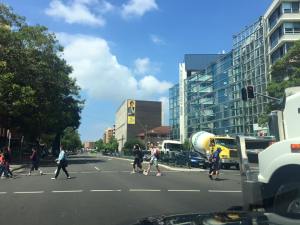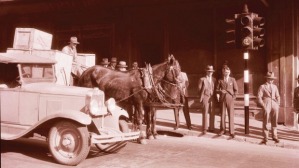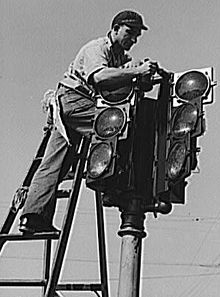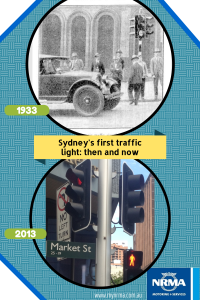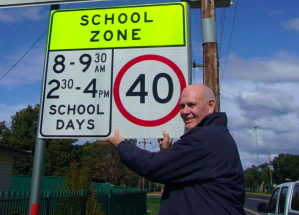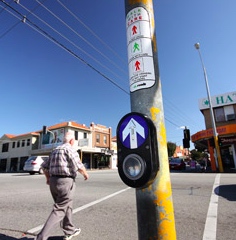On the 19th October 2015 I noticed something quite alarming on my drive into University ( and don’t worry I was in the passenger seat). This is the busy intersection at the bottom entrance of the University of New South Wales (UNSW) on Anzac Parade.
(Click photo to enlarge)
Note the elderly female in the bottom right hand side of the frame who began to cross the road as soon as the Green Man walking signal turned, along with numerous other pedestrians.
To my horror I watched as the Red Man (DON’T WALK) signal switched as the elderly lady, probably in her late 70’s and with a walking aid only just reached half way across the long stretch of main road.A handful of cars on the opposite side of the road heading towards the city moved slightly forward as they impatiently waited for their GO signal. At this point the elderly pedestrian was still crossing the road, clearly agitated and anxious at the pile up of revving cars beside her.
The elderly female you will be happy to know, made it to the other side, but only just. The big truck in the far lane was only inches away from the pedestrian as she leaped onto the footpath almost simultaneously as the cars where given the GO ahead. This is the kind of situation we see too often, were aged pedestrians are left on the road for many seconds after younger pedestrians have made it across.
I want to change this.
I want to give aged pedestrians the best possible care through improved safety measures that allow them to cross safety and without fear or stress.I want to introduce a system that provides seniors with the best possible safety at traffic intersections.
I want the NSW Government and Roads and Maritime Service to consider my Tap and Increase the Gap, Senior Step Card initiative.
Have you ever seen this happen? How do you think we could improve this picture?
Share your experiences below and hashtag #tapandincreasethegap
